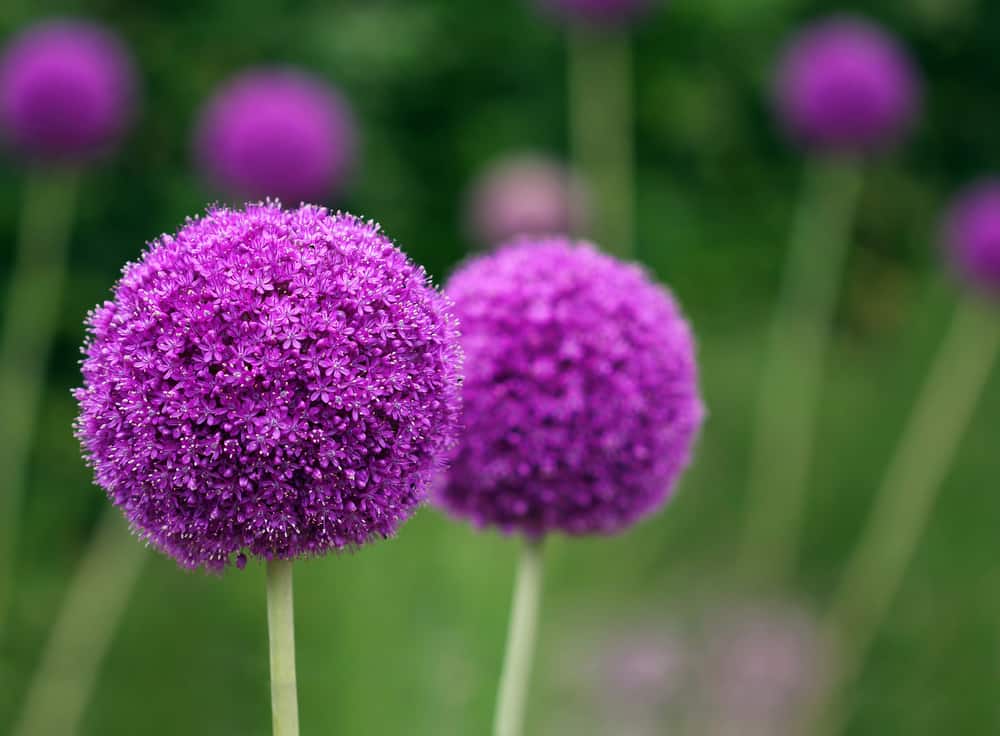
Purple has always been the color of royalty. Many castle gardens boasted the eye-stopping hue in all its grandeur.
In nature, purple has always been rare and thought of as exotic or sacred. The Phoenician city of Tyre was famous for its trade in purplish dyes because the color was so favored around the globe.
Today, purple perennial flowers continue to reign supreme for landscapes.
Show-stopping Purple Perennials
Whether you opt to plant a few purple flowers or dedicate an entire garden to the vibrant shade, the following list of show-stopping purple perennials will become a valued addition to your garden that will continue to provide impressive blooms for years.
1. Baptisia
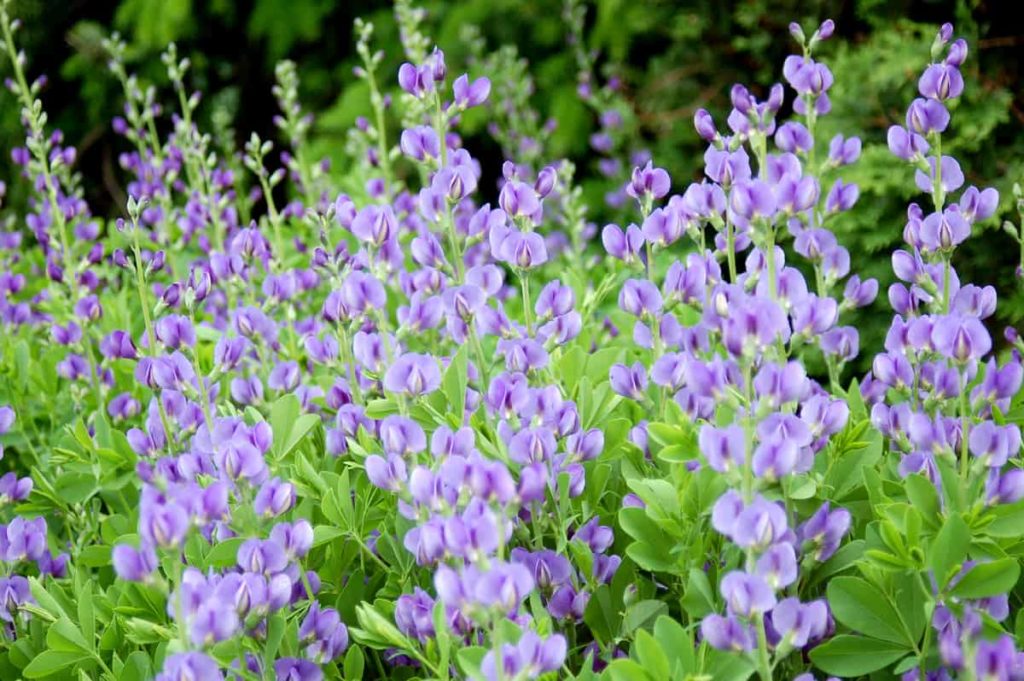
Enjoy towering spikes of purple flowers every spring with the Baptisia. This is a lovely native perennial that will flourish in the garden for decades with truly little care. It is both heat and drought-resistant. You can easily divide the plant when not in bloom to transplant it to other areas of the yard.
In addition to the lovely flowers, the plant also has unusual blue-green leaves that stand out for added visual interest in the garden.
The Baptisia will grow in just about any soil. It is a slow growing plant but once established puts on a lovely show with its eye-catching flower spikes that reach a height of up to 4 feet. It grows best in USDA zones 3 to 9. Choose a location of the garden that provides either full or partial sun for best growth.
2. Alliums
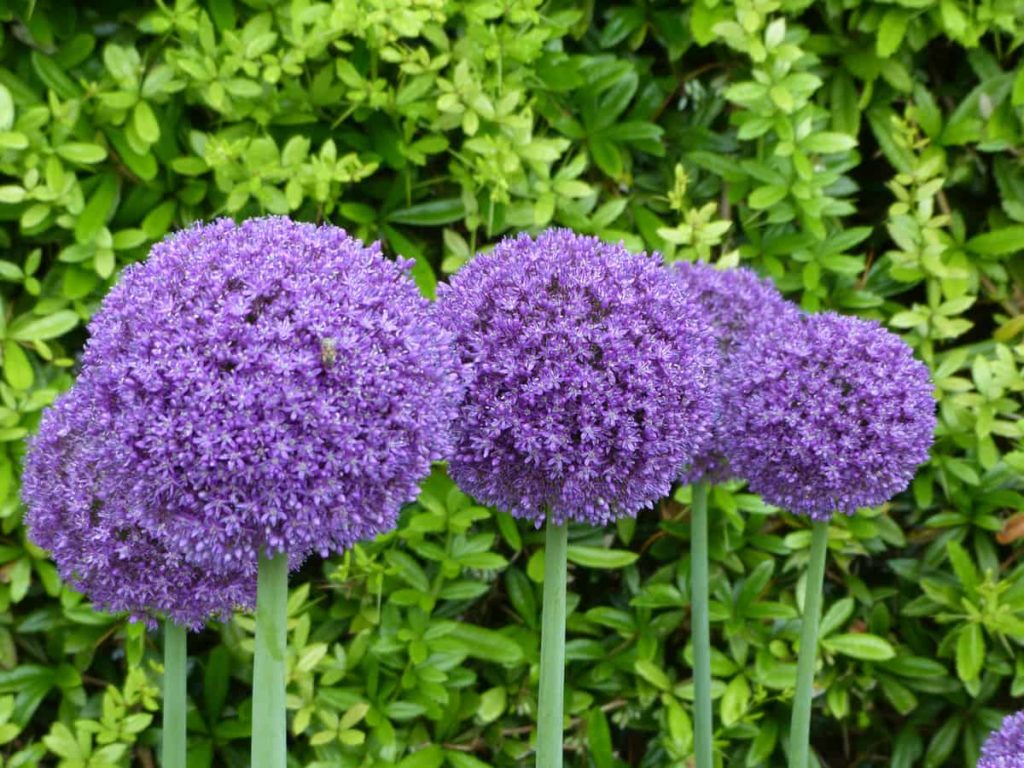
The Allium is an exquisite garden flower that also makes an excellent bouquet either fresh or dried. As a member of the onion family, Alliums are also resistant to deer and other garden varmints. They are drought tolerant and grow best in well drained soil in a USDA zone 3 or 4.
Plant the bulbs in a sunny location of the garden. Once established, you can easily divide them for transplant to other areas of the garden. The Allium truly thrives on neglect and you can leave it alone for years and the plant will continue to create non-stop displays of blooms.
There are many purple cultivars such as the following:
- Purple Sensation: Produces four inch purple flower globes and stands approximately 30 inches tall.
- Globemaster: Stands about four feet tall and produces deep purple flowers.
3. Catmint
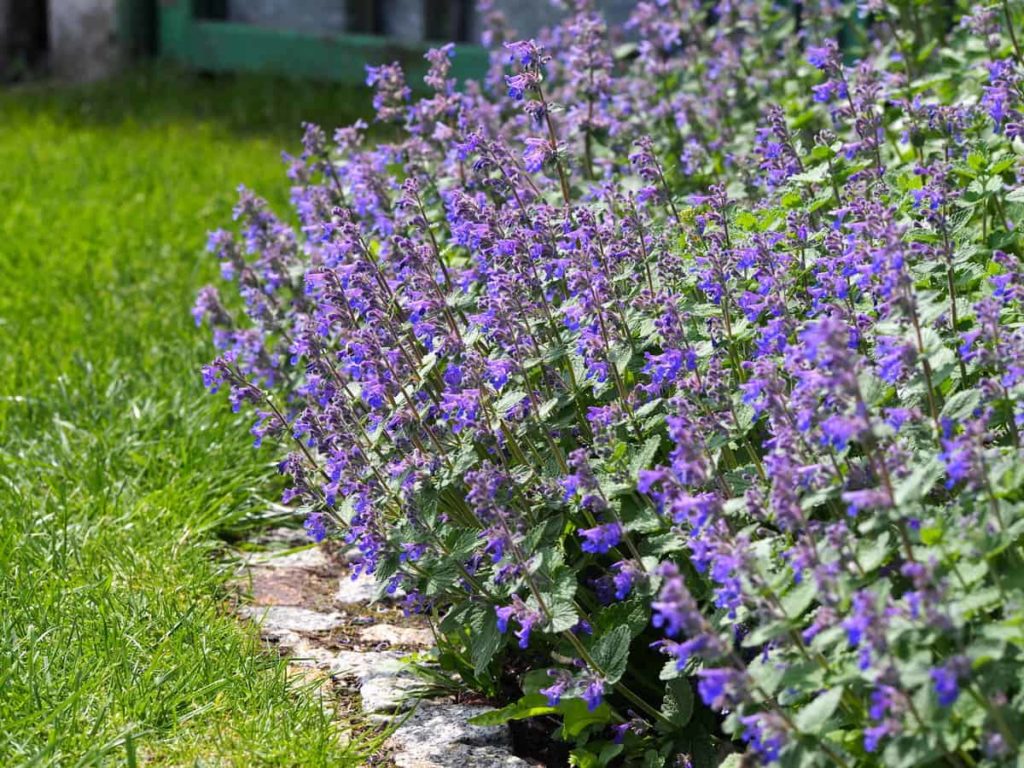
If you want a tough purple beauty for the garden, then you won’t be disappointed with catmint (Nepata).
It can survive hot and dry locations. This purple perennial will put on a non-stop display of flowers from spring to fall.
The foliage forms a silvery blue mound and from the middle the flower spikes arise. Birds and butterflies adore the blossoms. They also make great cut flowers.
Grows best in USDA zone 3 to 7 in a sunny location of the garden.
4. Hydrangea
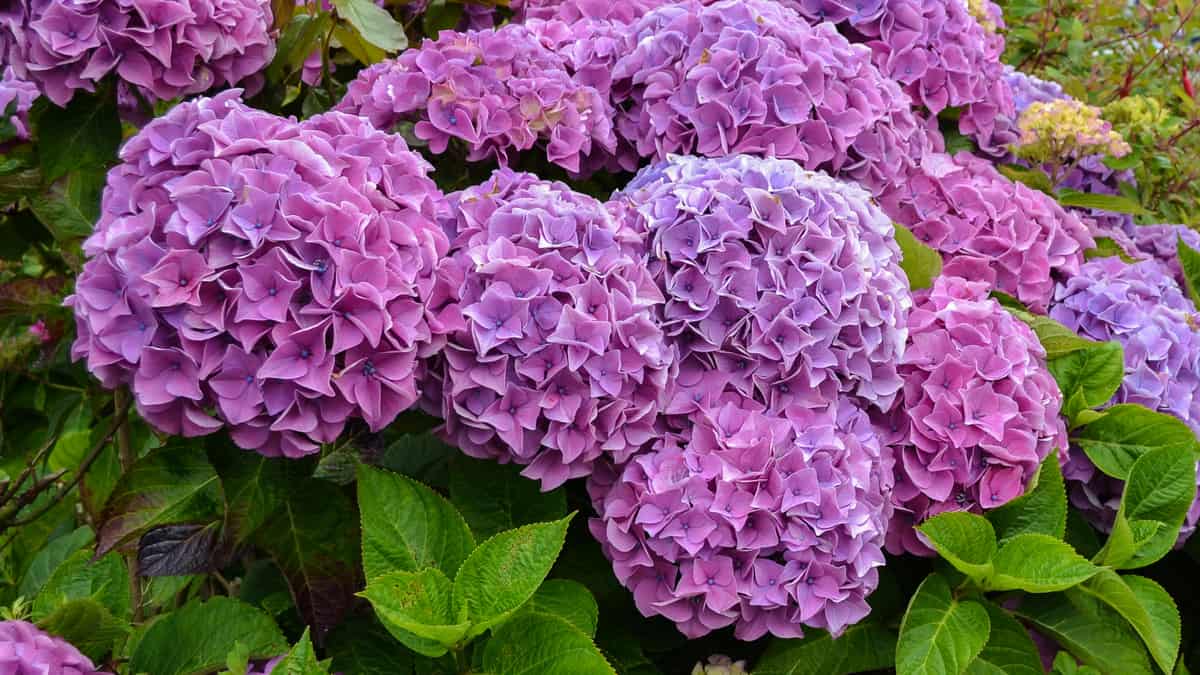
The queen of all flowers, the hydrangea is stunning. However, the flower’s coloration is largely dependent on the pH balance of the soil. Bloom colors range from white to blue to purple. If the soil is too alkaline then the flowers appear pinker and too acidic makes them blue. You’ll need to determine the sweet spot for the correct pH to give you the color you seek.
The plant grows best in USDA zones 4 to 9. It will tolerate either sun or shade. In hot areas, the sun’s intensity can easily kill the plants blooms so it’s best to find a planting site that affords morning sun and afternoon shade.
5. May Night Sage
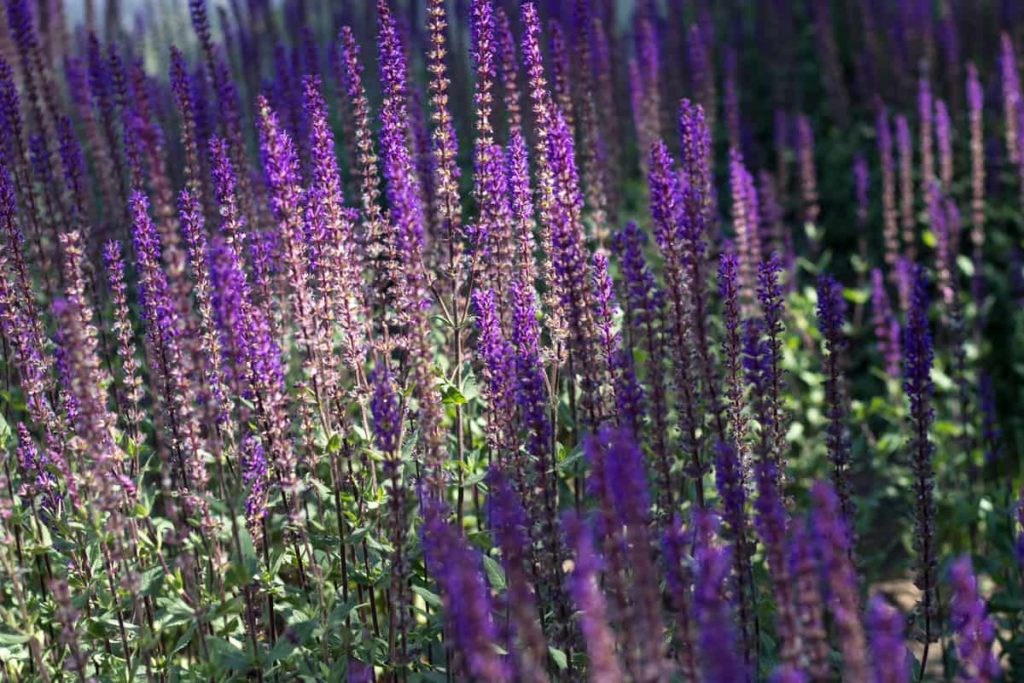
An attractive plant for pollinators, the May Night Sage (Salvia) blooms deep purple flowers from spring to late summer if you take the time to deadhead the plant. It always attracts an abundance of butterflies, bees, and hummingbirds.
Unlike many plants, the purple beauty thrives in clay soil and can withstand long periods of drought. It grows well in USDA zones 4 to 9. Without a doubt, this plant truly flourishes in areas that get hot during the day and cool at night. Plant in full sun for best blooms.
6. Lavender
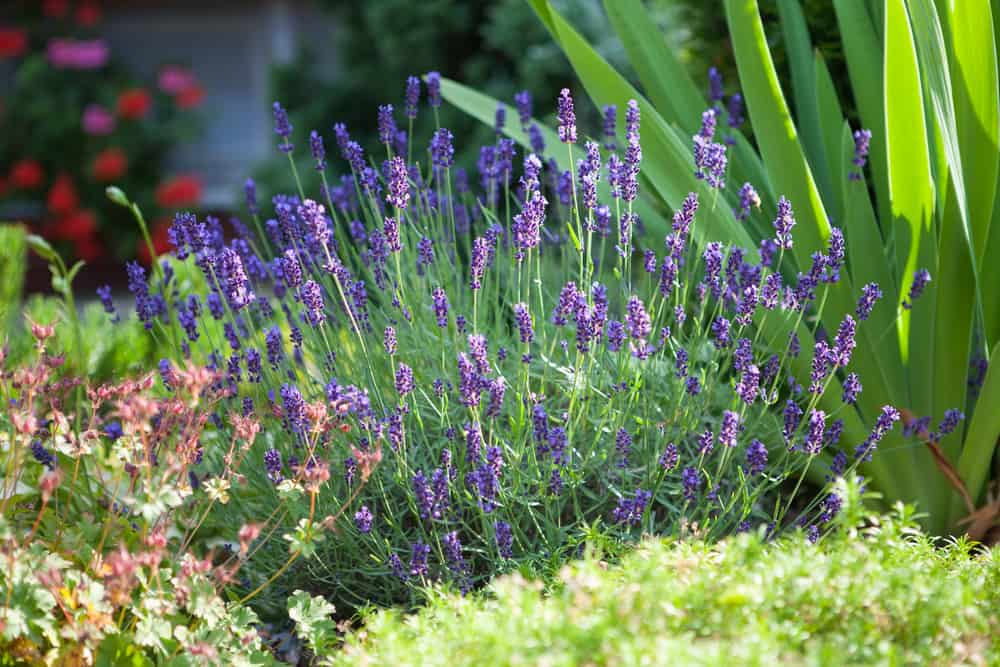
We would be remiss to not include the classic lavender in this list of show-stopping purple perennials. The fragrant beauty is low-maintenance and a cottage garden favorite. With ample sun, it will bloom throughout the summer.
The flowers look spectacular in dried arrangements and can be used to make potpourri, bath bombs, and soap. It grows best in areas that have cool winters and hot or dry summers. However, in recent years cultivators have been developed that can withstand extreme cold and continue to thrive in humidity so you’ll want to check your local garden retailer to find the ideal strain for your location.
7. Coneflower
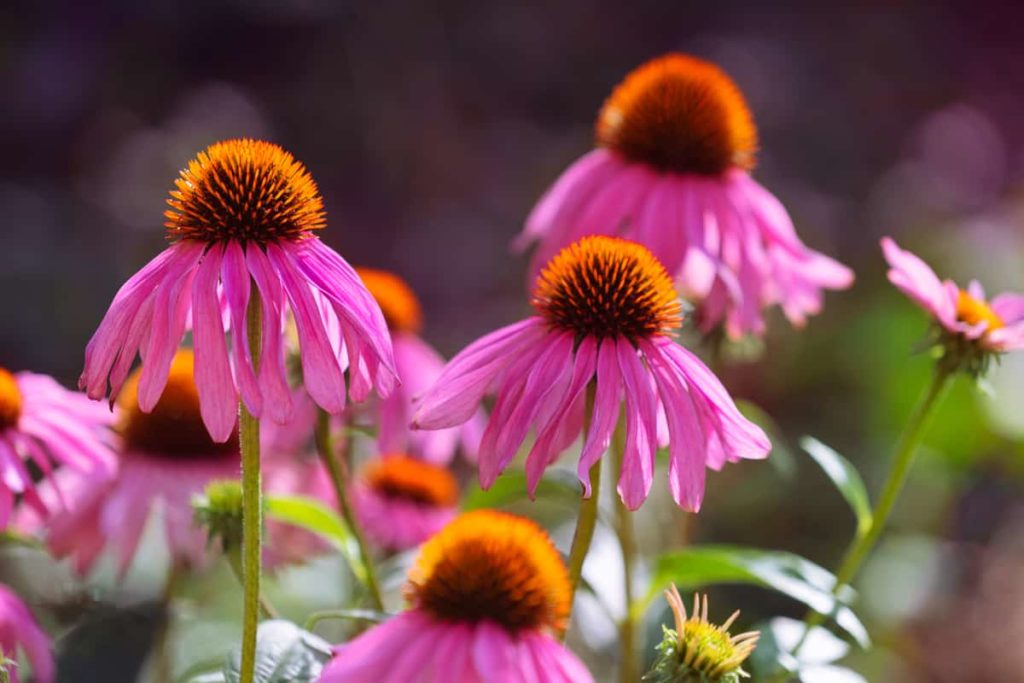
The coneflower (echinacea) belongs to the daisy family. The plant grows from two to five feet tall depending on the cultivar. It grows best in full sun or partial shade. It can easily withstand hot summers and periods of drought.
The bloom time runs from June to August. It grows best in USDA zones 3 to 9. This plant is beloved by butterflies.
You can also cut the flowers to make lovely arrangements for the home.
8. Verbena
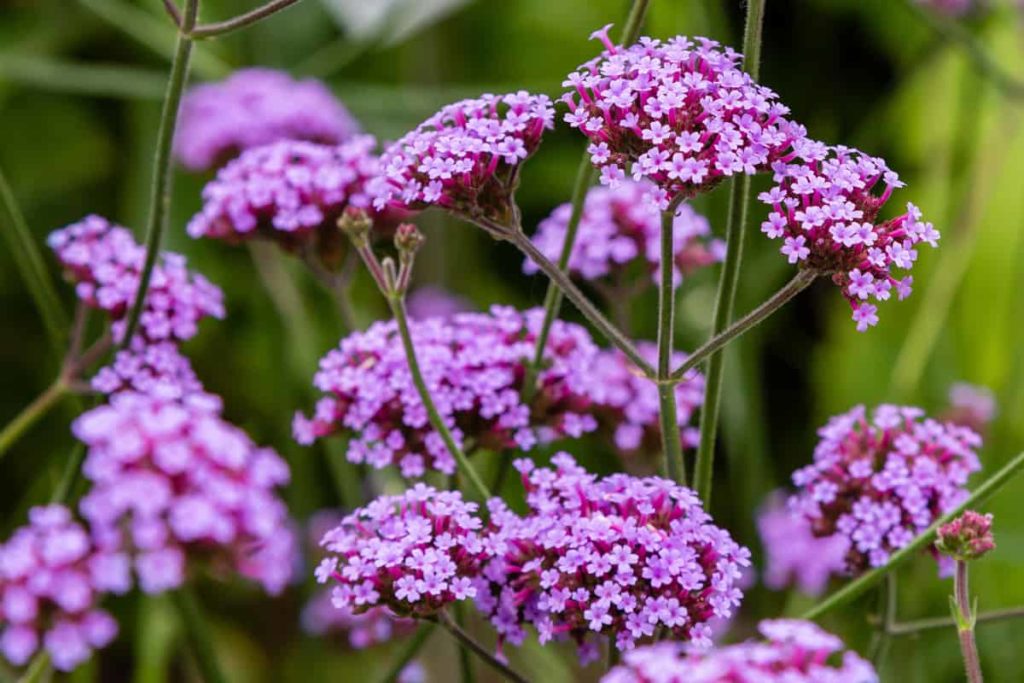
There is no other way to describe the verbena but a happy flower in the garden. It stands only six to 18 inches tall but produces a bevy of small summer blooms.
If the flowers start to slow simply shear the plant back to ¼ to encourage new flowers. This plant grows best in Zone 5 and above. Plant in full sun or partial shade for best-blooming results.
9. Iris
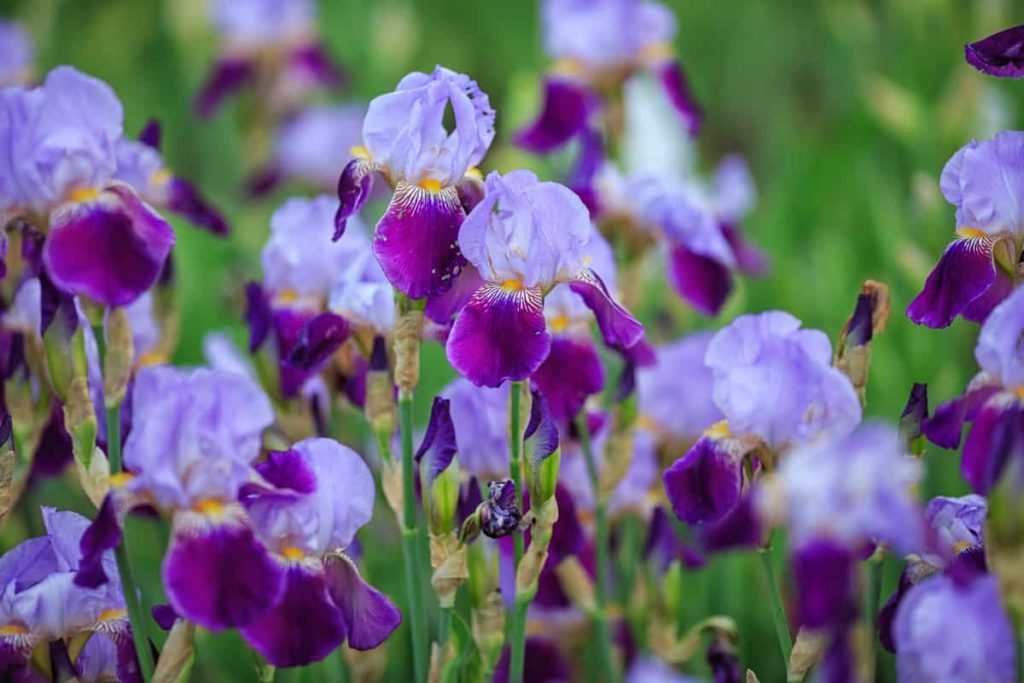
Our final selection is the stunning and distinguished iris. It comes in a variety of hues, but the most popular and classic colors range from violet to pale lilac.
Traditional perennial types like the bearded and Siberian iris are real showstoppers in the garden. It grows best in USDA zones 3 to 9.
As the plant ages, you can divide it and transplant it throughout the garden. The ideal planting site should receive at least six hours of sun per day.
The above show-stopping purple perennials growing in your garden will truly put the wow back in your landscape with their alluring beauty and bold color display.
